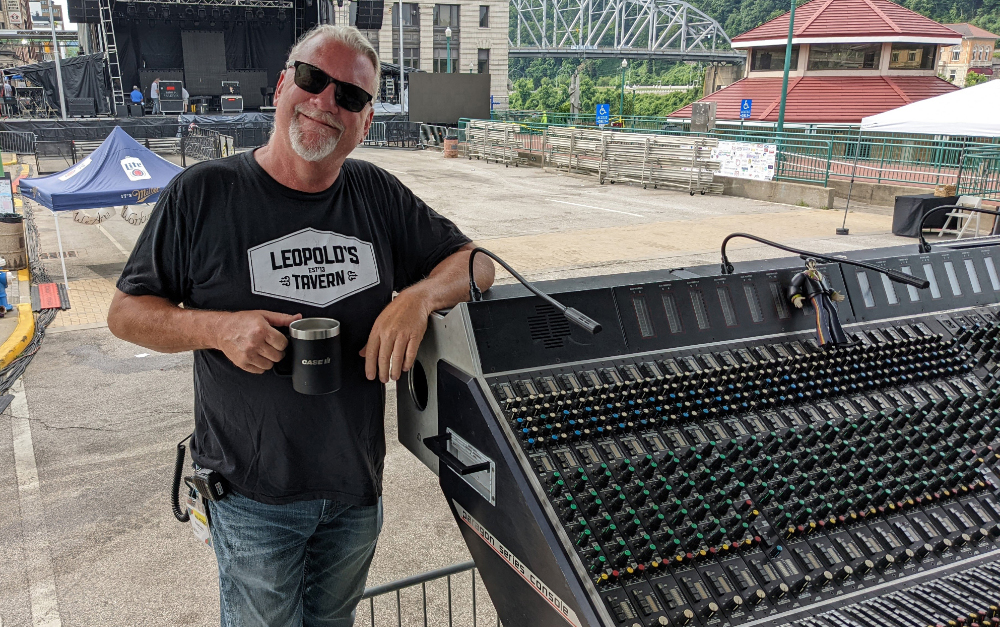Several years ago, I was fortunate in joining the sound team for noted country artist Trisha Yearwood as front-of-house engineer, and it was a rejuvenating experience for me as a mixer, to say the least.
In an audio world where technology (in general) and the digital domain (specifically) seem to reign supreme, the idea of using mostly analog gear with an A-list artist might sound downright outdated and ridiculous. Yet that’s exactly the road we took with Trisha.
To put this in perspective, think about how often we use “technology” to “enhance” a performance. It becomes a whole different ballgame, however, when an artist can actually perform live at a high level.
And this has got me thinking: Is it time to take stop being so concerned with new technology and get back to basics? What is the true essence of what we’re doing?
First, we started at the source — Trisha’s vocal microphone. It was an “old fashioned” Shure SM58. Not a BETA, not an 87, not an “A” or a “C” — nope, an SM58. (Not that there’s a thing at all wrong with those other fine models, but this is what worked for Trisha.)
Wireless? Absolutely not! (Sorry to blaspheme…) But we just connected that mic with an “Average Joe” 50-foot mic cable, which ran right to a splitter (or console in some cases).
The snake fed one of my all-time analog favorites, a Midas Heritage 3000 console, but you don’t need one of these to get great sound. I’m also partial to the smaller Midas Venice. To each his own.
Here, we let the mic preamp do the hard work, because, well, that’s what it was designed to do! We didn’t run the faders at +10 and the VCAs or subgroups at +10 just because the input might be weak.
Rather, we grabbed some more gain if it’s needed. (Another option would be to tell the singer about it, but that certainly was not a problem in our case.)
While one of my pet peeves is a weak vocal, the other is over-equalization. Too many people mixing these days are “over EQ-ing” everything on the console, and it’s time to stop! (Sorry, rant off.)
If there’s a good source tone (not always the case, of course) and the mic is of good quality, little to no console EQ should be needed. In fact, it often just messes things up. High pass – yes. EQ – no.
A bad source tone – i.e., a lousy guitar amp or kick drum – should be fixed at the source, rather than hacking away at the console EQ in an effort to salvage something that’s probably not worth saving in the first place. If you don’t know how to fix it at the source, ask a “gray hair” for some help.
Next in line was a quality compressor inserted on the channel (we’re talking about the main vocal channel). This is a place where taste does come into play – everyone has a different approach and preference: tube, solid-state, whatever. The one rule never to be broken is the use of a cheap compressor – it can and likely will ruin an entire mix.
Here is the central idea, the overriding purpose to all of this: Vocals are 75 percent to 85 percent of what the average concertgoer hears. Bad vocals equal a bad mix — every time.
Something else we payed more attention to, and it’s vital for anyone working in professional audio to understand: exactly how the signal gets from the output of the console to the loudspeakers.
I mean, we took a detailed inventory of everything in this path, from graphic EQs to crossovers to amplifiers to internal wiring of boxes.
It’s the best single way to recognize how to change the sound of a system to make it “exactly like you want.” Some of the best (console) mixes ever have been lost in bad systems. And then the whole endeavor becomes “what’s the point?”
Finally, we all say it all the time, but it’s time to actually believe it and do it: listen. Don’t just push the faders up without actually hearing what’s going on. I truly believe this is the single most important thing any of us can do to better our ability.
And while we’re at it, let’s quit staring at our laptops for all of the answers. I love Smaart and SpectraFoo as much as anyone, and sometimes they can really save you.
But they’re just tools, not a magic safety net. No single person who wants to truly succeed as a mixer can do it by relying on a machine.
Sorry, just a rejuvenated “veteran” sound person offering some thoughts. Who would have thought revisiting the “old school” could be so exciting?




















